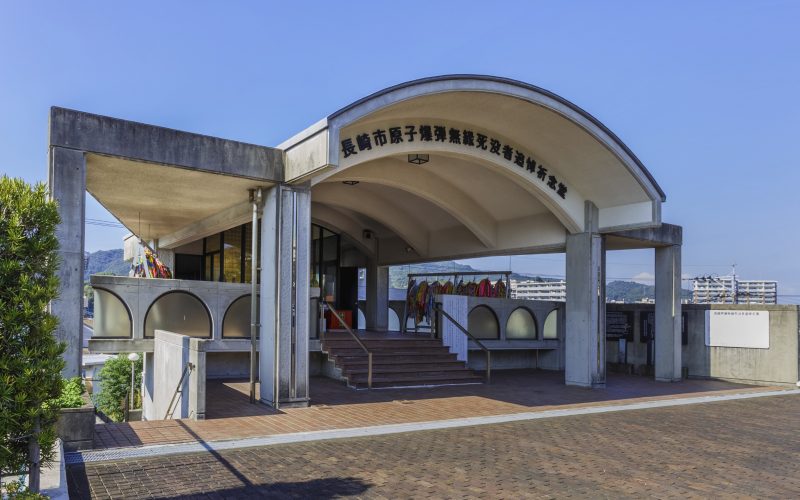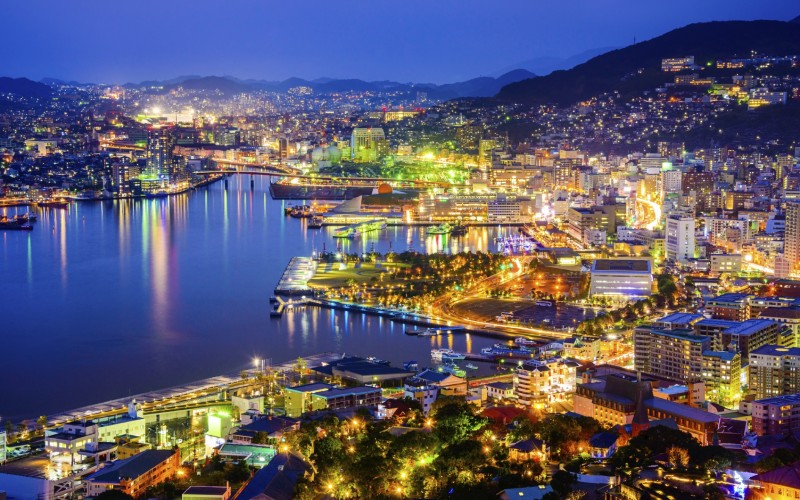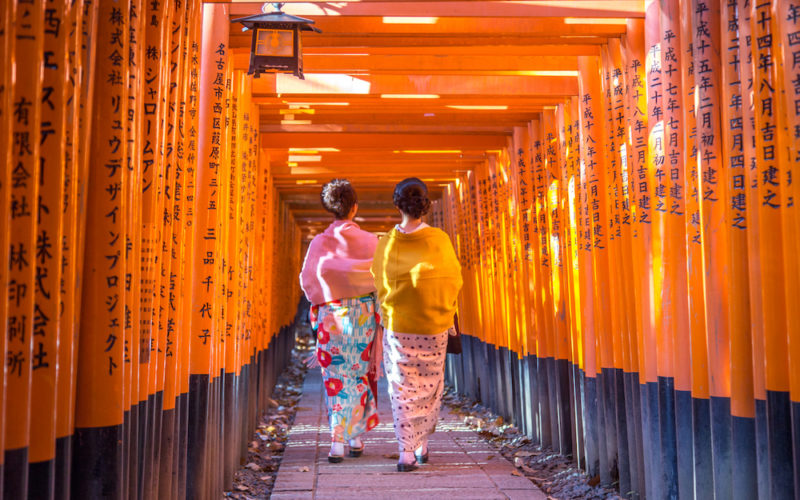Gunkanjima (Hashima Island)
The inspiration behind the villain’s hideout in the 2012 Bond film Skyfall, Gunkanjima is an eerie time capsule of Japan’s industrial age.
Some places have ghost towns. Nagasaki has a ghost island—the uninhabited Hashima Island.
It’s referred to by locals as Gunkanjima, or Battleship Island, for its similar appearance to a warship when seen from a distance. Since 2009, tours have been running to the deserted mining island, undisturbed since residents abandoned their homes leaving everything from shoes to electronics to lesson-filled blackboards.
Battleship Island
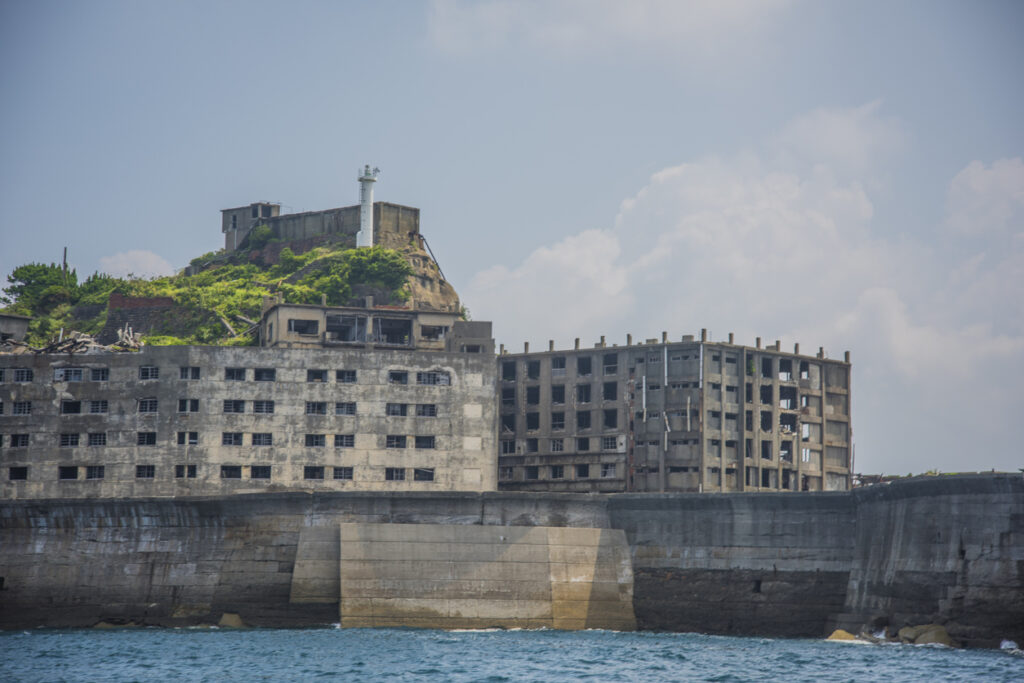
The island is a reminder of its dark history as a site of forced labor prior to and during the Second World War.
Walking around the crumbling grocery stores and peeking into children’s bedrooms covered with rust and weeds, it’s an eerie glimpse of the imprint of human life on our environment.
Begun as a coal mining operation in 1887, the Mitsubishi Company purchased Hashima Island in 1890. Mitsubishi enhanced the island’s mining facilities while increasing its landmass to 16 acres. It then built concrete, high-storied apartment complexes to house its employees and their families, as well as an outer sea wall. At its peak in 1959, Gunkanjima was home to 5,259 people, making it at one time the most densely populated place ever recorded.
By 1974 the mines under Gunkanjima had dried up and Mitsubishi announced it was ending operations. Residents began departing in haste to seek new jobs. Within a few months, the island was completely deserted.
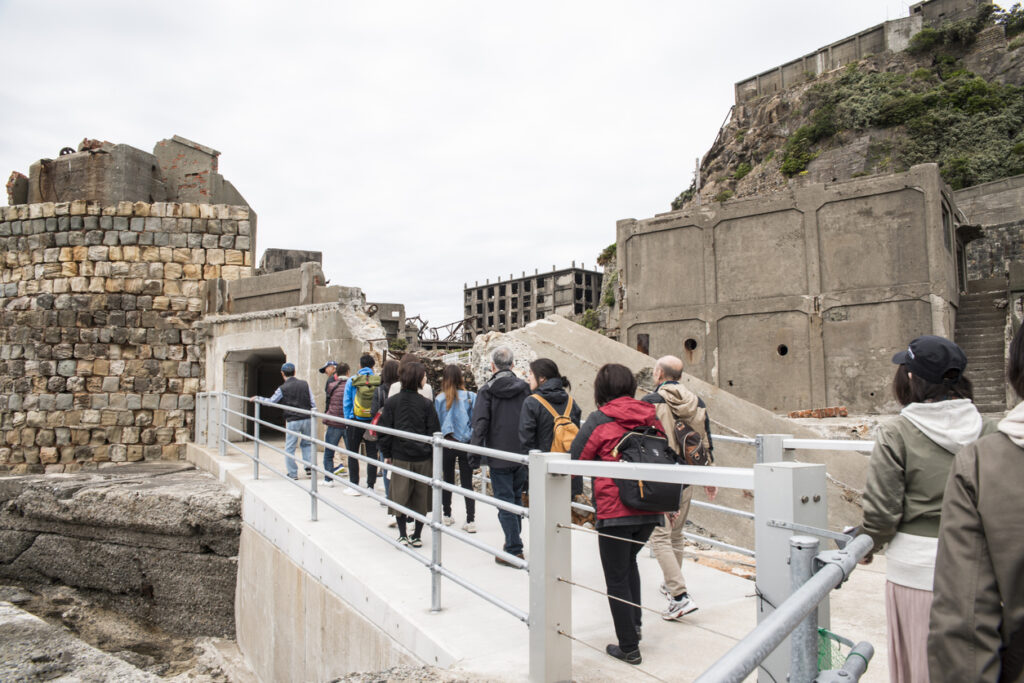
Tourists wishing to get a closer look at the island can easily book a day trip.
The early 2000s saw a renewed interest in Gunkanjima, with a number of different companies in Nagasaki vying to offer tours. It’s the only way to access the island and the whole operation is tightly controlled – just three ferry companies are permitted to run tours – with visitors limited to a walking path that makes up part of the island’s perimeter due to safety concerns. Tours take approximately three hours and are offered in morning and afternoon sessions. Typical programs include ferry rides to and from Nagasaki port to the island and one hour walking on land.
In July 2015, Gunkanjima became a UNESCO World Heritage site. This was despite complaints made by South Korea, later withdrawn, regarding Mitsubishi’s use of Koreans and Chinese for hard labor on the island during World War II. Tour guides are normally reluctant to address this issue so it’s best not to push it. You can (and should) find out more about the history of Gunkanjima online.
